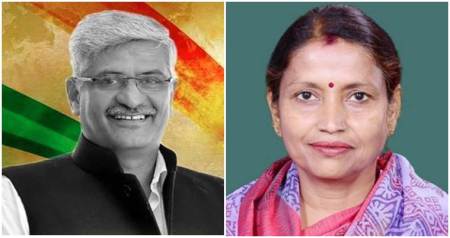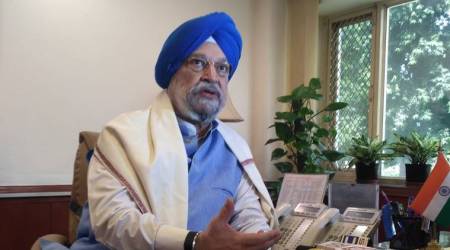 Ministry of Commerce and Industry, which was earlier headed by Minister of State with Independent Charge Nirmala Sitharaman, is now being headed by cabinet-rank minister Suresh Prabhu. Illustration: Subrata Dhar
Ministry of Commerce and Industry, which was earlier headed by Minister of State with Independent Charge Nirmala Sitharaman, is now being headed by cabinet-rank minister Suresh Prabhu. Illustration: Subrata Dhar
With elevation of Ministers of State to Cabinet rank in the latest reorganisation of Prime Minister Narendra Modi’s council of ministers, key economic ministries such as commerce and industry, coal, mines, petroleum & natural gas and skill development are now being headed by Cabinet ministers as opposed to Ministers of State with Independent Charge earlier. In terms of numbers, now there are 12 portfolios being headed by Ministers of State with independent charge, compared with 15 ministries before the reshuffle on Sunday. Manmohan Singh’s UPA-II Cabinet, too, had 12 portfolios headed by Ministers of State, while Atal Bihari Vajpayee’s council of ministers had seven when they relinquished their offices in May 2004.
Ministry of Commerce and Industry, which was earlier headed by Minister of State with Independent Charge Nirmala Sitharaman, is now being headed by cabinet-rank minister Suresh Prabhu. Similarly, the Ministry of Mines, which was under Minister of State with Independent Charge Piyush Goyal has been reallocated to Narendra Singh Tomar. Incidentally, Goyal took over the mines ministry from Tomar during the last reshuffle that happened in July 2016.
Goyal, now a Minister of Railways and Coal and Sitharaman now Minister of Defence were elevated to Cabinet rank on Sunday. Dharmendra Pradhan was also promoted, by the virtue of which the Ministry of Petroleum and Natural Gas is now being headed by a Cabinet minister. Pradhan was also given the portfolio of Ministry of Skill Development and Entrepreneurship, which was earlier held by Rajiv Pratap Rudy as a Minister of State with Independent Charge. The skill development ministry, like the Ministry of Ayurveda, Yoga and Naturopathy, Unani, Siddha and Homoeopathy, was formed under the current NDA regime.
Under previous regimes as well, some of these heavyweight economic portfolios were headed by Cabinet-rank ministers. These include the Ministry of Petroleum and Natural Gas, which was headed by M Veerappa Moily during the UPA-II government, and Ram Naik in the Atal Bihari Vajpayee Cabinet. Commerce ministry, too, had been led by Cabinet ministers — Anand Sharma in UPA-II, and Arun Jaitley in the Vajpayee council. The Ministry of Mines was led by Dinsha Patel during UPA-II, while under Vajpayee, the portfolio was allocated to Ramesh Bais, who was a Minister of State with Independent Charge.

Apart from these, portfolios such as communications, labour and employment, housing and urban affairs, new & renewable energy, and micro, small and medium enterprises are being independently headed by Ministers of State. Ministry of Communications is being led by Manoj Sinha, Ministry of Housing and Urban Affairs by the newly-inducted Hardeep Singh Puri, Ministry of New and Renewable Energy by Raj Kumar Singh, while the Ministry of Labour and Employment is being held by Santosh Kumar Gangwar. Ministry of Micro, Small and Medium Enterprises, which is now being held by Giriraj Singh, was headed by Cabinet-rank minister Kalraj Mishra, before Sunday’s reshuffle. In Manmohan Singh’s Cabinet, the MSME ministry was held by Minister of State with Independent Charge KH Muniappa, while in the Vajpayee council, it was headed by Cabinet minister CP Thakur.
Manoj Sinha was given the charge of communications ministry in July 2016, before which it was held by Cabinet minister Ravi Shankar Prasad. The ministry was split from Ministry of Communications and Information Technology. Before Prasad, the portfolio was held by Cabinet ministers Kapil Sibal and Arun Shourie in Manmohan Singh’s and Atal Bihari Vajpayee’s councils, respectively.
A number of ministries under the UPA-II government were also allocated to Ministers of State with Independent Charge, with both the current and the previous NDA regimes having Cabinet ministers handle those portfolios. These ministries include those of women & child development; consumer affairs, food & public distribution; statistics & programme implementation; chemicals & fertilisers; corporate affairs; MSME; drinking water & sanitation; and information & broadcasting.
Interestingly, in Narendra Modi’s Cabinet, several Ministers of State with Independent Charge, also held the positions of junior ministers in other ministries. For example, apart from being Minister of State with Independent Charge for Communications, Manoj Sinha is also a junior minister of railways; Minister of State with Independent Charge for Youth Affairs and Sports Rajyavardhan Singh Rathore will also work as a junior minister in the Ministry of Information and Broadcasting under Smriti Irani.
The main difference between ministers of state with independent charge and Cabinet-rank ministers is that the formers do not generally represent their ministries in Cabinet meetings, unless invited by the Prime Minister to do so. Handing over of ministries that were earlier headed by Ministers of State, to Cabinet-rank ministers, would technically mean lesser involvement of the Prime Minister’s Office in decision making of these portfolios.

